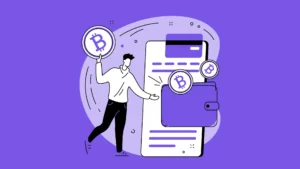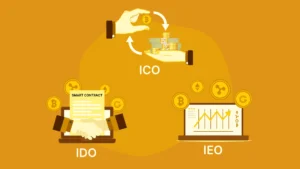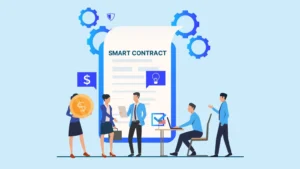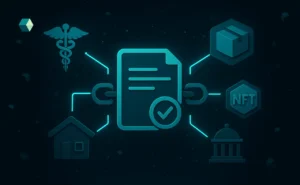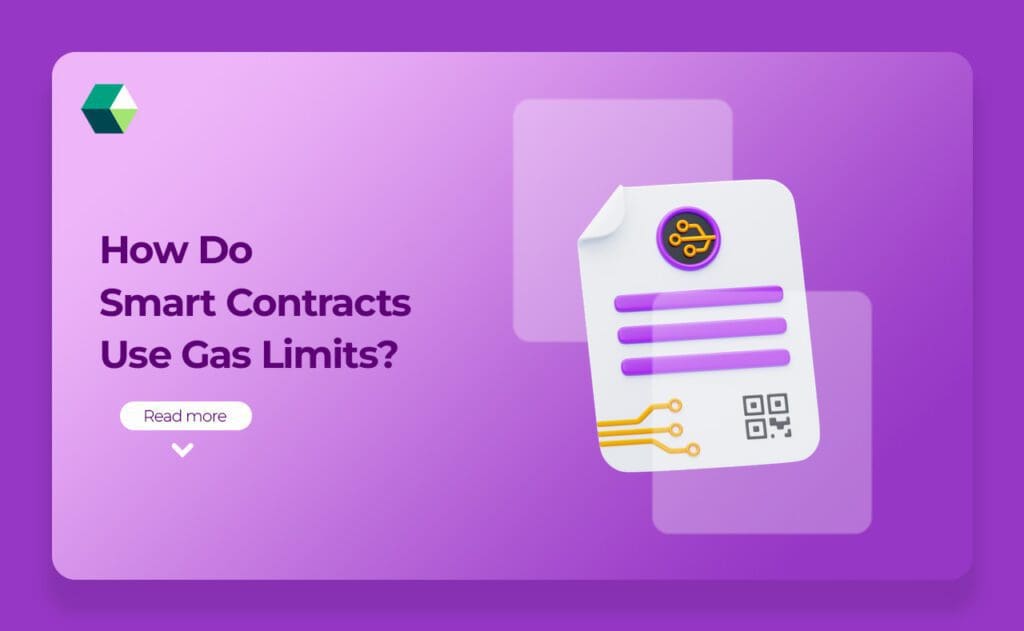
Smart contracts are a cornerstone of blockchain technology, enabling automated and decentralized transactions. These contracts, which execute code autonomously when certain conditions are met, rely on gas limits to function correctly. Understanding how Smart Contracts use gas limits is crucial for developers and users alike, as it impacts transaction costs, execution efficiency, and overall network performance. This blog delves deeply into the concept of gas limits in smart contracts, explaining their significance and how they are utilized.
What is the Gas Limit?
The gas limit is a crucial parameter in blockchain networks that defines the maximum amount of computational work, measured in gas units, that a transaction or smart contract execution is allowed to consume. This limit ensures that operations do not exceed a predefined boundary of computational resources, thereby preventing any single transaction or contract from monopolizing network resources or causing potential disruptions. When a transaction is initiated or a smart contract is executed, users set a gas limit to specify the maximum gas they are willing to allocate. If the operation consumes more gas than the specified limit, it fails, and any changes made during execution are reverted.
This mechanism not only helps in managing resource utilization and maintaining network stability but also protects the network from abuse and ensures that users can control the cost of their transactions. By enforcing the gas limit, blockchain networks maintain a balance between computational demand and resource availability. It acts as a safeguard, preventing any single transaction from exhausting the network’s capacity, thus securing smooth and efficient operation for all participants.
What is the Gas Limit Smart Contract?
The gas limit in a smart contract refers to the maximum amount of computational work, measured in gas units, that can be consumed during the execution of that particular smart contract. When deploying or interacting with a smart contract on a blockchain like Ethereum, users specify a gas limit to ensure that the contract has enough resources to complete its execution. This limit helps manage and control the cost associated with executing complex operations within the contract. If the contract execution exceeds the gas limit, the operation fails, and any changes made during the execution are reverted, protecting the blockchain from potential disruptions or excessive resource consumption.
By setting an appropriate gas limit, developers and users can ensure that smart contracts run efficiently while preventing scenarios where a contract might otherwise consume disproportionate amounts of computational resources. This helps maintain overall network stability and performance. The gas limit is therefore essential in balancing the execution of complex contract operations with the need to protect the blockchain from excessive resource use, ensuring smooth and secure functioning of the network.
How Do Smart Contracts Use Gas Limits?
Smart contracts utilize gas limits to manage the computational resources required for their execution, ensuring efficiency and preventing resource abuse on blockchain networks. When a smart contract is deployed or interacted with, a gas limit is specified, which sets the maximum amount of gas that can be consumed during the contract’s execution. This limit is crucial because it defines the upper boundary of computational work that can be performed, thereby protecting the network from excessive resource consumption and potential disruptions.
If a smart contract’s execution exceeds the specified gas limit, the transaction is aborted, and any changes made during execution are reverted to maintain the blockchain’s integrity. This mechanism is essential for controlling costs, as users pay gas fees based on the amount of gas consumed. It also helps prevent scenarios where complex contracts might consume disproportionate amounts of network resources. By setting a gas limit, smart contracts ensure they operate within a manageable scope, facilitating smoother execution and maintaining overall network performance and stability.
In essence, gas limits in smart contracts act as a safeguard against inefficiencies and abuses. They allow developers to optimize their code and users to predict and manage the costs associated with executing smart contract operations. This system helps maintain the balance between cost control and efficient execution, ensuring the blockchain remains reliable and functional for all participants.
Why Do Smart Contracts Need Gas Limits?
-
Resource Management
Gas limits regulate the amount of computational work that a smart contract can perform. By setting a cap on gas consumption, the blockchain ensures that no single contract can exhaust the network’s resources, which helps maintain overall system performance and stability. This is crucial in a decentralized network where multiple contracts and transactions compete for limited computational power.
-
Prevention of Abuse
Without gas limits, smart contracts could potentially exploit network resources, leading to scenarios where malicious contracts consume excessive amounts of computational power, causing network congestion or denial-of-service attacks. Gas limits serve as a safeguard to prevent such abuse by imposing a maximum threshold for resource usage.
-
Cost Control
Gas fees are a critical component of blockchain networks, reflecting the cost of computational work. By setting a gas limit, users can control and predict the costs associated with executing smart contracts. This transparency helps users avoid unexpected expenses and ensures they only pay for the computational resources their transactions actually use.
-
Network Stability
By enforcing gas limits, blockchain networks can maintain stability and prevent scenarios where a single contract or transaction might otherwise monopolize network resources. This stability is crucial for ensuring that the network can handle a high volume of transactions and Smart Contract executions effectively.
-
Error Handling
Gas limits provide a mechanism for handling errors during smart contract execution. If a contract attempts to perform operations beyond its gas limit, the transaction is reverted, and any partial changes are undone. This protects the blockchain from potential inconsistencies and maintains its integrity.
How Do Gas Limits Work with Smart Contracts?
Gas limits are important for making sure smart contracts run properly on a blockchain. They set the maximum amount of work a contract can do. When someone uses or creates a deployed smart contract, they choose a gas limit. This limit helps prevent the contract from using too much of the network’s power.
While the contract is running, the blockchain keeps track of how much gas is being used. If the Deployed Smart Contract needs more gas than the limit allows, the process stops, and any changes are undone. This keeps the network safe and avoids overload.
Gas limits also help control costs and push developers to write better, more efficient code. By sticking to gas limits, deployed smart contracts run smoothly without slowing down the whole blockchain.
How to Reduce the Gas Fee in a Smart Contract?
Reducing the gas fee for executing a smart contract involves optimizing various aspects of the contract’s design and execution to minimize the amount of computational work required. One effective approach is to optimize the code by streamlining operations and reducing unnecessary computations. This can be achieved by using more efficient algorithms, minimizing the use of storage, and avoiding complex loops and recursive functions that consume excessive gas. Another strategy is to batch transactions whenever possible, combining multiple operations into a single transaction to reduce the overall gas cost.
Additionally, developers can leverage gas-efficient data structures and algorithms, such as those that minimize the need for expensive operations like sorting and searching. Smart contract upgrades or utilizing more recent versions of a blockchain protocol can also provide opportunities for gas savings, as improvements in the protocol often include optimizations for gas usage. Gas price adjustments can be made by monitoring network congestion and timing transactions for periods of lower demand, reducing the cost of gas per unit. Lastly, using off-chain computations for complex calculations and only storing essential data on-chain can significantly lower gas fees. By applying these techniques, developers can effectively reduce the gas fees associated with smart contract execution, making their contracts more cost-efficient and accessible.
How Can You Optimize Gas Limits for Smart Contracts?
Optimizing gas limits for smart contracts is essential for managing costs and enhancing efficiency in blockchain transactions. This process involves a combination of strategic coding practices, efficient data management, and leveraging advanced technologies. Here’s a more detailed approach to optimizing gas limits for smart contracts:
-
Efficient Coding Practices
The complexity of smart contract code directly impacts gas consumption. Simplify contract logic by breaking down complex functions into smaller, more manageable parts. Avoid redundant calculations and ensure that each function performs its tasks with minimal computational overhead. Choosing the right data structures can significantly affect gas usage. For example, using mapping instead of array for frequently accessed data can reduce gas costs related to storage and retrieval operations. Additionally, use bytes32 over string when dealing with fixed-size data to minimize gas usage.
-
Optimize Function Usage
The visibility of functions (public, external, internal, private) affects gas costs. Functions that are only intended to be used within the contract should be marked as internal or private to save gas, as these function types are less costly to call. Where possible, batch multiple operations into a single transaction. For example, if a contract needs to update multiple pieces of data or interact with multiple contracts, combining these operations into one transaction can reduce the overall gas cost compared to executing them individually.
-
Efficient Data Handling
Loops that iterate over large datasets can be particularly costly. Minimize their use and ensure they are as efficient as possible. If looping is necessary, design loops to perform the least amount of work and limit their iteration count. Implement algorithms that are designed to reduce computational complexity. For instance, using binary search instead of linear search in sorted data can cut down on gas consumption significantly.
-
Upgrade to Gas-Efficient Protocols
Blockchain networks frequently undergo upgrades to improve gas efficiency and reduce costs. Staying updated with the latest protocol versions can provide access to new features and optimizations that lower gas usage. Layer 2 scaling solutions, such as Optimistic Rollups, zk-Rollups, and state channels, offer ways to perform transactions off-chain and reduce the gas costs associated with on-chain operations. Implementing these solutions can dramatically cut gas fees for contract executions.
-
Monitor and Adjust Gas Prices
Gas prices fluctuate based on network congestion. Adjusting the gas price according to current network conditions can help manage transaction costs. Tools and services that monitor gas prices can provide insights to set an optimal gas price. Setting gas limits that accurately reflect the contract’s needs is crucial. Overestimating the gas limit can lead to higher costs. Utilize gas estimation tools and conduct thorough testing to set precise limits.
-
Conduct Gas Optimization Reviews
Regularly audit smart contracts to identify inefficiencies and areas for improvement. Testing tools can simulate various scenarios to analyze gas consumption and highlight optimization opportunities. Compare different versions of the contract and their gas usage. Benchmarking helps identify the most gas-efficient implementation and provides insights into how changes impact gas costs.
How Does Nadcab Labs Improve Gas Limits for Smart Contracts?
Nadcab Labs enhances gas limits for smart contracts by employing a suite of optimization techniques and advanced technologies tailored to reduce gas consumption and improve overall efficiency. The team focuses on optimizing smart contract code by simplifying logic, using efficient data structures, and minimizing storage operations to ensure that each contract operates within a lean computational footprint. They leverage the latest blockchain protocols and Layer 2 solutions to further reduce gas costs by offloading computations and transactions off-chain. Nadcab Labs also conducts comprehensive audits and benchmarking of smart contracts to identify and rectify inefficiencies, ensuring that gas limits are set precisely to avoid overestimation and unnecessary costs.
Additionally, they incorporate dynamic gas pricing strategies and use cutting-edge tools to monitor and adjust gas prices based on network conditions. By integrating these advanced methodologies, Nadcab Labs helps clients deploy more cost-effective and resource-efficient smart contracts, optimizing performance and reducing operational expenses. Their approach ensures that every smart contract is not only efficient in its execution but also adaptable to fluctuating blockchain environments, ultimately delivering significant savings and enhanced scalability for their clients.


